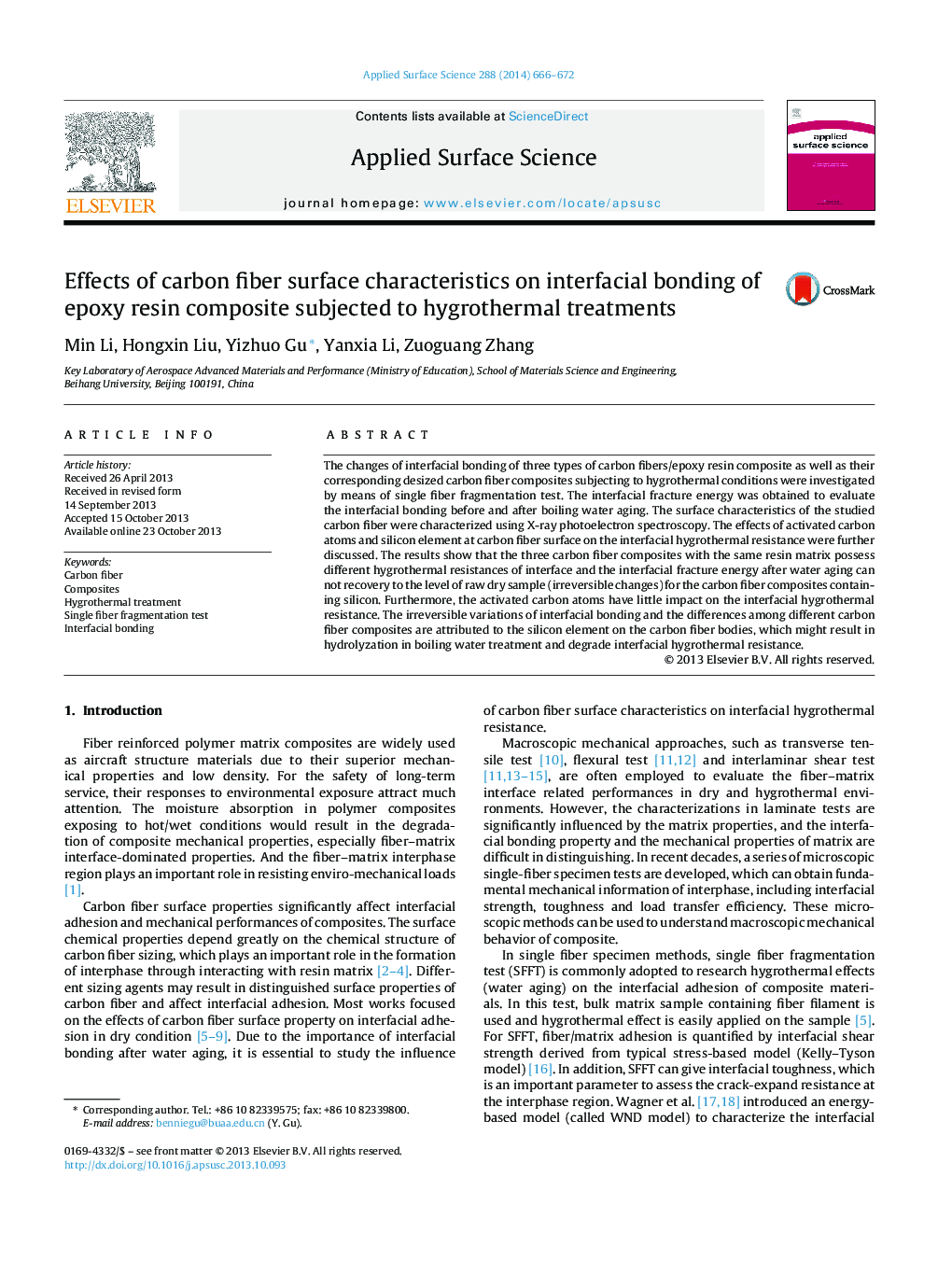| کد مقاله | کد نشریه | سال انتشار | مقاله انگلیسی | نسخه تمام متن |
|---|---|---|---|---|
| 5351896 | 1503676 | 2014 | 7 صفحه PDF | دانلود رایگان |
عنوان انگلیسی مقاله ISI
Effects of carbon fiber surface characteristics on interfacial bonding of epoxy resin composite subjected to hygrothermal treatments
ترجمه فارسی عنوان
تاثیرات ویژگی های سطحی فیبر کربن بر بسامد موازی کامپوزیت رزین اپوکسی تحت درمان های هیدروترمال
دانلود مقاله + سفارش ترجمه
دانلود مقاله ISI انگلیسی
رایگان برای ایرانیان
کلمات کلیدی
فیبر کربن، کامپوزیت درمان گرمازا، تست تقسیم فیبر تک، پیوند میان فاز،
ترجمه چکیده
تغییر اتصال بسامدی سه نوع کامپوزیت فیبرهای کربنی / اپوکوی رزین و کامپوزیت های ویساید کربن مشخص شده کربن تحت شرایط هیگروترمال با استفاده از آزمون تکه تکه شدن تک فیبر مورد بررسی قرار گرفت. انرژی شکست مواجی برای ارزیابی پیوندهای بین فازی قبل و بعد از جوشی شدن آب به دست آمد. ویژگی های سطح فیبر کربن مورد مطالعه با استفاده از طیف سنجی اشعه ایکس پرتو ایکس مشخص شد. اثرات اتم کربن فعال و عنصر سیلیکون در سطح فیبر کربن بر مقاومت فشاری بین فازهای گرمایشی بیشتر مورد بحث قرار گرفت. نتایج نشان می دهد که سه کامپوزیت فیبر کربن با یک ماتریس رزین دارای مقاومت متقابل گرما مقاوم در برابر حرارت متفاوت هستند و انرژی شکستگی بین فاز بعد از پیرایش آب نمی تواند به سطح نمونه خام خشک (تغییرات غیر قابل برگشت) برای کامپوزیت های فیبر کربنی حاوی سیلیکون بازگردد. علاوه بر این، اتمهای کربن فعال تأثیر اندکی بر مقاومت فشاری بین فاز دارند. تغییرات غیرقابل برگشت باند مواجهه و تفاوت در میان کامپوزیت های فیبر کربن مختلف به عنصر سیلیکون در الیاف فیبر کربن مربوط می شود که ممکن است باعث هیدرولیز شدن در آب جوش شود و باعث کاهش مقاومت فشاری بین فاز می شود.
موضوعات مرتبط
مهندسی و علوم پایه
شیمی
شیمی تئوریک و عملی
چکیده انگلیسی
The changes of interfacial bonding of three types of carbon fibers/epoxy resin composite as well as their corresponding desized carbon fiber composites subjecting to hygrothermal conditions were investigated by means of single fiber fragmentation test. The interfacial fracture energy was obtained to evaluate the interfacial bonding before and after boiling water aging. The surface characteristics of the studied carbon fiber were characterized using X-ray photoelectron spectroscopy. The effects of activated carbon atoms and silicon element at carbon fiber surface on the interfacial hygrothermal resistance were further discussed. The results show that the three carbon fiber composites with the same resin matrix possess different hygrothermal resistances of interface and the interfacial fracture energy after water aging can not recovery to the level of raw dry sample (irreversible changes) for the carbon fiber composites containing silicon. Furthermore, the activated carbon atoms have little impact on the interfacial hygrothermal resistance. The irreversible variations of interfacial bonding and the differences among different carbon fiber composites are attributed to the silicon element on the carbon fiber bodies, which might result in hydrolyzation in boiling water treatment and degrade interfacial hygrothermal resistance.
ناشر
Database: Elsevier - ScienceDirect (ساینس دایرکت)
Journal: Applied Surface Science - Volume 288, 1 January 2014, Pages 666-672
Journal: Applied Surface Science - Volume 288, 1 January 2014, Pages 666-672
نویسندگان
Min Li, Hongxin Liu, Yizhuo Gu, Yanxia Li, Zuoguang Zhang,
